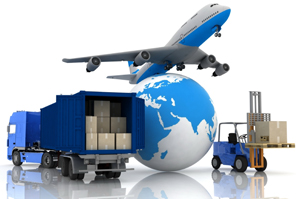Transportation management systems have a proven ROI. Primarily, a TMS can save companies money by lowering their freight spend. An ARC Advisory Group strategic report on the ROI of TMS found that respondents indicated freight savings of approximately 8% with the use of a TMS application. But that does not mean that there is not room for improvement. ARC is excited about the promise of machine learning to allow a TMS to better handle competing objectives and discover nonobvious impacts on performance.

The primary reason companies buy a transportation management system is for freight savings. These freight savings can be attributed to simulation and network design, load consolidation and lower cost mode selections, and multi-stop route optimization.
But few companies would buy a TMS if it would lead to declining service levels. A transportation management system maintains the service levels by understanding the origin to destination lead times and using that as a constraint during the optimization run. There are also analytics associated with the system. For example, a shipper can analyze which carriers are too often late, and which lanes and destinations often receive late shipments. Consequently, it is not surprising that most companies using a TMS maintain or improve their service levels.
This sounds complex and sophisticated, and it is, but machine learning promises to allow us to go deeper, and to capture nonobvious tradeoffs.
Let me give an example. TMC, a division of C.H. Robinson that provides managed transportation services, published a white paper called Multi-stop Trucking: How It Affects Load Acceptance and Pricing. What it shows is that for multi-stop truckloads, every additional stop lowers the on-time delivery level.
“On single-stop truckload shipments, 80 percent of loads that picked up late still delivered on time. Multi-stop loads are different… The more stops there are, the worse the on-time delivery percentage if one of the early pickups is delayed or late… Trucks that picked up late on a three-stop load, for example, averaged on time delivery only 71 percent of the time.”
Existing TMS solutions will calculate the many situations where multi-stop loads save money. The TMS understands the lead times. It assumes the lead times will be adhered to and the loads will be delivered on time. But the transportation management system does not show in-line analytics to a planner that say, for example, “if you go forward with this shipment, there is only an X% chance the last customer on the route will receive their load on time.” Existing TMS solutions are just not built in a way where these kinds of relationships can be discovered and easily acted upon.
But TMSs – particularly network-based solutions like those from TMC, BluJay Solutions, and Transplace – are rich in data. Machine learning depends on Big Data sets. The problem above would probably be solved using supervised learning. In supervised learning the system is provided with a raw data set but then also provided with a target. In this case, the system is asked to predict on-time deliveries (OTDs) based on a variety of data inputs. How does OTD change based on multi-stops? Based on region? Based on type of customer (customers classified as grocers, for example)? Based on real-time milestone data. And potentially based on lots of other data sets, even data sets that exist outside the TMS. Then, the algorithm attempts to understand how to match the input to the output and whether an input has any impact at all on the desired outcome.
Regression is a form of statistics that can find relationships. But here is the difference between regression in statistics and regression in machine learning: when regression is used in machine learning, there is a feedback loop and the system will continue to learn and get smarter over time.
It is not necessarily just freight costs and service levels that need to be traded off. There are any number of metrics that can be targeted for improvement. I’d argue, for example, that a balanced set of metrics also should include some measure of how popular a shipper is with carriers, whether the shipper is a shipper of choice. First tender acceptance rate for the lead carriers on your lanes is a good proxy for performance as a shipper of choice.
But the Big Data accumulated in TMS and complementary solutions can lead to a fuller understanding of how all sorts of policies and practices affect important performance metrics. It is inevitable that TMS solutions will be built with Data Lakes and supporting analysis tools that will allow these kinds of tradeoffs to be discovered and surfaced to planners.


















